Photo
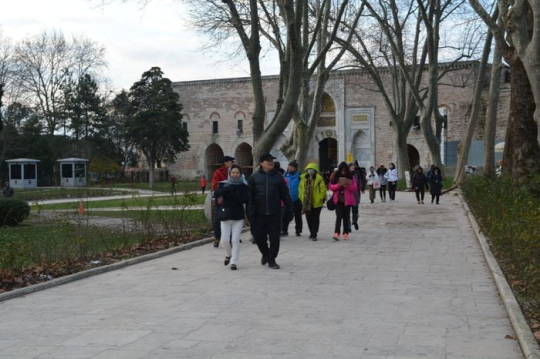
Bulgarian Icon Painting
Medieval Traditions and Monasteries
Bulgarian icon painting has roots in the rich medieval traditions of Athos and the old Bulgarian monasteries such as the Rila Monastery, the Bachkovo Monastery, and others near Sofia, Plovdiv, and Turnovo. These monasteries were not only centers of religious and spiritual life but also hubs of literary and educational activities. They played a crucial role in preserving Bulgarian culture and fostering the idea of national independence. The monks and artists in these monasteries worked hard to keep the tradition of icon painting alive, contributing to the spiritual and cultural maturation of the Bulgarian people.
The Bond Between Icon Painting and National Art
Another important aspect of Bulgarian icon painting is its connection to national art and folklore. This bond gave the art a distinctly democratic character. In the 17th century, Bulgaria experienced an economic boom, with many towns thriving and producing goods for the Ottoman Empire and trading with Western and Central Europe. This economic progress naturally fueled the development of art. Many beautiful icons from this period have survived, originating from bustling towns like Nessebur, Plovdiv, Turnovo, Etropole, Vratsa, and Lovech, which were also artistic centers.
The National Revival and Enlightenment
The 18th and 19th centuries marked the peak of the Bulgarian National Revival and Enlightenment. During this time, national art schools were established in several towns, including Samokov, Tryavna, Bansko, and Strandja. Each of these schools had its own unique style and techniques. Some notable painters from these schools were Hristo Dimitrov, Zahari Zograf, and Stanislav Dospevski from Samokov; Papa Vitanov and Zahari Tsanyov from Tryavna; Toma Vishanov and Dimiter Molerov from Bansko; and Alexo Odrinchanin and Nikola Konstantinov from Strandja Tours Bulgaria.
These artists created remarkable works that are significant in the history of Orthodox Balkan art. For example, Zahari Zograf painted in the Great Monastery of St. Athanasius in Athos, while Mitrophan Zograf from Strandja worked in the St. George Monastery in Sveta Gora. Painters like Ditcho Zograf and others from Debar decorated many churches in the southeastern Balkan countries. True to the spirit of the Revival, these artists transformed the traditional rigid canonical style into a more vibrant and life-affirming art, using bright and cheerful colors instead of the usual austere tones.
The Legacy of Bulgarian Icons
The history of Bulgarian icons reflects the resilience of a small yet passionate Balkan nation. This art form has developed and flourished over ten centuries. Today, the beauty and significance of Bulgarian icons are recognized worldwide, with exhibitions in cities like Paris, London, Moscow, Leningrad, Tokyo, and Mexico City attracting significant interest.
Now displayed in national museums and galleries, Bulgarian icons captivate viewers with their serene and majestic beauty. They stand as a testament to Bulgaria’s contribution to Orthodox art and culture, inviting us into a world of grace and artistic excellence.
0 notes
Photo
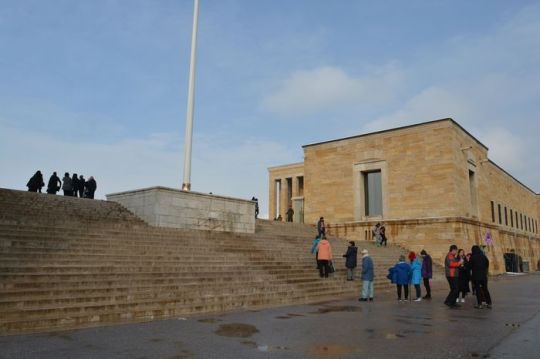
The Iskra Museum of Kazanlak
A Legacy of Patriotism
Established in 1901 by Kazanlak native Petar Topouzov, the Iskra Museum of History stands as one of Bulgaria’s oldest, most extensive, and beloved regional museums.
Rich Cultural Heritage
With over 50,000 original exhibits, the museum showcases the diverse material and spiritual culture of the Kazanlak region. Permanent exhibitions cover Archaeology, National Renaissance, Modern History, Ethnography, and Contemporary History.
Highlights of the Collection
Visitors are drawn to the museum’s impressive collections, including rare bone sickles (unique in Southeast Europe), medieval ceramics, weaponry, firearms, and traditional jewelry and costumes worn by past inhabitants of Kazanlak Private Turkey Tours.
Discoveries from Thracian Tombs
The new treasury hall proudly displays recent discoveries from Thracian tombs in the region, featuring remarkable artifacts such as the golden wreath of Seuthes III, ancient helmets, knee-pieces, horse appliques in gold and silver, and a rare assortment of coins and relics from the Thracian era.
Preserving Cultural Heritage
Dedicated to preserving, researching, and promoting the historic legacy of the Kazanlak region, the museum encompasses all Thracian tombs within the Valley of the Thracian Kings.
Journey Through Time The Ethnographic Complex
Stroll along the romantic cobbled streets of Kulata neighborhood, the oldest part of town, to discover the Ethnographic Complex. Relax in the courtyard with a glass of rose liqueur and preserves, immersing yourself in the serene ambiance of a historic Bulgarian home.
A Glimpse into the Past
Once owned by the Hadjienov family, prominent rose producers, the house now serves as a museum. Explore the primitive rose distillery, known as gyutpana, nestled under the shed. Nearby stands a typical rural house, reflecting the practicality and modesty of the era. The interior furnishings and layout offer insights into the patriarchal grandeur and family unity that once thrived within these walls.
0 notes
Photo

The Iskra Museum of Kazanlak
A Legacy of Patriotism
Established in 1901 by Kazanlak native Petar Topouzov, the Iskra Museum of History stands as one of Bulgaria’s oldest, most extensive, and beloved regional museums.
Rich Cultural Heritage
With over 50,000 original exhibits, the museum showcases the diverse material and spiritual culture of the Kazanlak region. Permanent exhibitions cover Archaeology, National Renaissance, Modern History, Ethnography, and Contemporary History.
Highlights of the Collection
Visitors are drawn to the museum’s impressive collections, including rare bone sickles (unique in Southeast Europe), medieval ceramics, weaponry, firearms, and traditional jewelry and costumes worn by past inhabitants of Kazanlak Private Turkey Tours.
Discoveries from Thracian Tombs
The new treasury hall proudly displays recent discoveries from Thracian tombs in the region, featuring remarkable artifacts such as the golden wreath of Seuthes III, ancient helmets, knee-pieces, horse appliques in gold and silver, and a rare assortment of coins and relics from the Thracian era.
Preserving Cultural Heritage
Dedicated to preserving, researching, and promoting the historic legacy of the Kazanlak region, the museum encompasses all Thracian tombs within the Valley of the Thracian Kings.
Journey Through Time The Ethnographic Complex
Stroll along the romantic cobbled streets of Kulata neighborhood, the oldest part of town, to discover the Ethnographic Complex. Relax in the courtyard with a glass of rose liqueur and preserves, immersing yourself in the serene ambiance of a historic Bulgarian home.
A Glimpse into the Past
Once owned by the Hadjienov family, prominent rose producers, the house now serves as a museum. Explore the primitive rose distillery, known as gyutpana, nestled under the shed. Nearby stands a typical rural house, reflecting the practicality and modesty of the era. The interior furnishings and layout offer insights into the patriarchal grandeur and family unity that once thrived within these walls.
0 notes
Photo

Sultan Murad IV - Reign and Legacy
Repairing and Enriching Sacred Sites
The Tombs of Imam-i Azam and Sheikh Abdulkadir Geylani, revered figures in Islam, underwent extensive repairs supervised by Sheikhulislam. They were adorned with opulent gold and silver lamps along with jewelry, enhancing their grandeur and significance. Additionally, Mustafa Pasha, the trusted guard of Sultan Murad IV, displayed profound devotion by sending a diamond to adorn the Prophet’s Tomb in Medina (Ravza-i Mutaharra).
International Diplomacy and Remarkable Gifts
Sultan Murad IV’s reign saw prosperity that extended its influence to the farthest reaches of the east. An envoy from India arrived in Musul bearing lavish gifts while the Sultan was en route from Baghdad to Istanbul. Among these gifts was an exquisitely decorated belt valued at fifty thousand piasters and a unique helmet crafted from elephant’s ear and rhinoceros hide, reputed to be impervious to bullets and swords. In a display of his prowess, Sultan Murad IV pierced the helmet effortlessly with his spear, filling it with gold florins before returning it to the Indian Sovereign’s palace.
Restoring Order and Stability
Sultan Murad IV’s rule was marked by his unwavering authority, which he wielded to maintain order within the empire, rescuing it from the brink of collapse. However, the toll of such authoritarianism took a toll on him, leaving him exhausted. Upon his brother Sultan Ibrahim’s ascension to the throne, order had already been established, aided by a treasury brimming with resources.
The Reformative Era Under Sultan Ibrahim
During Sultan Ibrahim’s reign, characterized by historians as a period of folly, Kara Mustafa Pasha, a seasoned vizier, served as Grand Vizier. Under his leadership Istanbul Walking Tour, the treasury remained stable, intoxication was abolished, and administrative reforms were implemented, including city registrations and the first census. He ensured timely payments for Janissaries and Spahis, with salaries fixed at eighty aspers of pure silver. Moreover, he introduced the practice of allocating clothing aid annually from the treasury. Despite his remarkable achievements, Kara Mustafa Pasha met an untimely end through execution in 1053.
Legacy and Conclusion
Sultan Murad IV’s reign left an indelible mark on Ottoman history, marked by prosperity, diplomatic prowess, and authoritative governance. His legacy endured through the reforms initiated under Sultan Ibrahim, underscoring the significance of stable governance and administrative efficiency in sustaining an empire.
0 notes
Photo
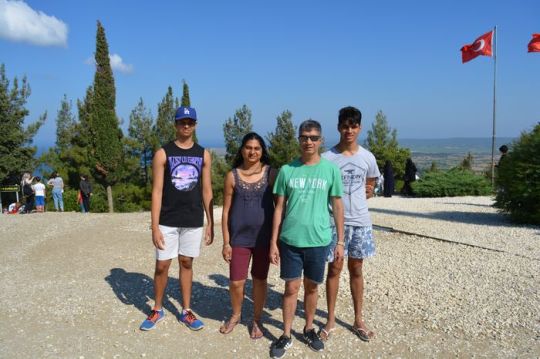
The Reality of Bulgarian Villages
Contrary to my previous assumptions, the burning of Bulgarian villages did not merely entail the destruction of crude mud huts.
Surprising Discoveries
I was astounded to learn that many Bulgarian villages are, in fact, well-constructed towns boasting sturdy stone houses. Within these communities, a considerable number of residents enjoy a level of comfort comparable to that found in English or French villages.
Challenging Stereotypes
Rather than the primitive savages commonly depicted, the Bulgarians are hardworking, industrious, honest, and peaceful people. Their villages reflect a level of civilization that defies outdated stereotypes.
The Truth about the Insurrection
While insurrection was attempted in several villages, Batak remained peaceful, with no recorded instances of violence against Turks.
Surrender without Resistance
When Achmet-Agha, the leader of the massacre, demanded the surrender of arms, the villagers initially resisted. However, they offered to surrender their weapons to the regular troops or the local authority in Tatar Bazardjik. Despite their willingness to comply with official channels, Achmet-Agha insisted on receiving the arms directly Tour Packages Balkan.
Surrender of Arms
After prolonged negotiations, the villagers reluctantly handed over their arms. It’s crucial to note that these were not weapons amassed for insurrection but rather commonplace possessions carried openly by both Christians and Muslims.
The events following the surrender of arms paint a grim picture, one that sheds light on the atrocities witnessed by eyewitnesses.
0 notes
Photo
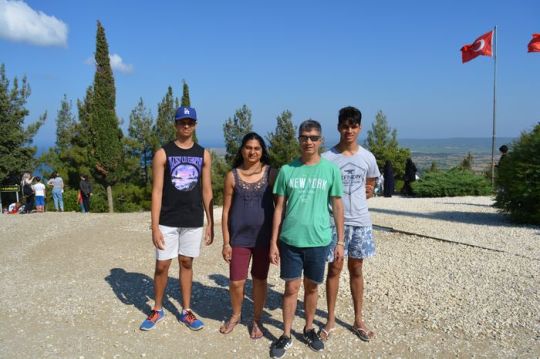
The Reality of Bulgarian Villages
Contrary to my previous assumptions, the burning of Bulgarian villages did not merely entail the destruction of crude mud huts.
Surprising Discoveries
I was astounded to learn that many Bulgarian villages are, in fact, well-constructed towns boasting sturdy stone houses. Within these communities, a considerable number of residents enjoy a level of comfort comparable to that found in English or French villages.
Challenging Stereotypes
Rather than the primitive savages commonly depicted, the Bulgarians are hardworking, industrious, honest, and peaceful people. Their villages reflect a level of civilization that defies outdated stereotypes.
The Truth about the Insurrection
While insurrection was attempted in several villages, Batak remained peaceful, with no recorded instances of violence against Turks.
Surrender without Resistance
When Achmet-Agha, the leader of the massacre, demanded the surrender of arms, the villagers initially resisted. However, they offered to surrender their weapons to the regular troops or the local authority in Tatar Bazardjik. Despite their willingness to comply with official channels, Achmet-Agha insisted on receiving the arms directly Tour Packages Balkan.
Surrender of Arms
After prolonged negotiations, the villagers reluctantly handed over their arms. It’s crucial to note that these were not weapons amassed for insurrection but rather commonplace possessions carried openly by both Christians and Muslims.
The events following the surrender of arms paint a grim picture, one that sheds light on the atrocities witnessed by eyewitnesses.
0 notes
Photo

Evolution of Tsarevets Reinforcement and Transformation
The third period marked a significant phase of reconstruction, driven by the evolving cultural and political landscape. Extensive fortification efforts were undertaken, including reinforcement of fortress walls, the creation of complex entry paths, and enhancements in water storage capacity. These endeavors aimed to safeguard the capital against external threats while accommodating the changing needs of its inhabitants.
The Patriarchate Citadel of Spiritual Authority
Situated atop Tsarevets Hill, the Patriarchate stands as an independent architectural ensemble, encompassed by formidable fortress walls with the primary entrance facing west. Spread across 2413 square meters on the highest part of the hill known as Chan Tepe (The Bell Hill), the complex centers around the Patriarchate Church “Vuznesenie Gospodne” (Ascension Day of God), revered as the “mother of all Bulgarian churches” by medieval authors.
The core of the complex comprises the Patriarchate Church, surrounded by an interior courtyard housing bedrooms, working quarters, a library, and possibly a scriptorium. The architectural style of the church follows the Tzarigrad type, characterized by cross-domed cupolas grouped around a bell tower. Notably, the church’s west cliff saw construction in the 14th century, showcasing remarkable architectural evolution.
Urban Dynamics and Community Life
The Palace and the Patriarchate served as the focal points of the capital city, their grandeur balancing the surrounding suburbs and buildings. The layout of streets and buildings suggests a deliberate urban planning strategy, with distinct clusters for artisans Private Tours Istanbul, traders, service industry workers, and local government officers. Surrounding monasteries, discovered through artifacts, played multifaceted roles beyond religious worship, serving as centers for education, reading, writing, and information dissemination within the broader community.
The strategic fortifications and architectural landmarks of Tsarevets reflect the intricate interplay between defensive needs, cultural aspirations, and community dynamics. Through meticulous archaeological research and historical analysis, we unravel the layers of Tsarevets’ rich heritage, shedding light on its transformation from a medieval stronghold to a vibrant center of spiritual and secular power.
0 notes
Photo

Evolution of Tsarevets Reinforcement and Transformation
The third period marked a significant phase of reconstruction, driven by the evolving cultural and political landscape. Extensive fortification efforts were undertaken, including reinforcement of fortress walls, the creation of complex entry paths, and enhancements in water storage capacity. These endeavors aimed to safeguard the capital against external threats while accommodating the changing needs of its inhabitants.
The Patriarchate Citadel of Spiritual Authority
Situated atop Tsarevets Hill, the Patriarchate stands as an independent architectural ensemble, encompassed by formidable fortress walls with the primary entrance facing west. Spread across 2413 square meters on the highest part of the hill known as Chan Tepe (The Bell Hill), the complex centers around the Patriarchate Church “Vuznesenie Gospodne” (Ascension Day of God), revered as the “mother of all Bulgarian churches” by medieval authors.
The core of the complex comprises the Patriarchate Church, surrounded by an interior courtyard housing bedrooms, working quarters, a library, and possibly a scriptorium. The architectural style of the church follows the Tzarigrad type, characterized by cross-domed cupolas grouped around a bell tower. Notably, the church’s west cliff saw construction in the 14th century, showcasing remarkable architectural evolution.
Urban Dynamics and Community Life
The Palace and the Patriarchate served as the focal points of the capital city, their grandeur balancing the surrounding suburbs and buildings. The layout of streets and buildings suggests a deliberate urban planning strategy, with distinct clusters for artisans Private Tours Istanbul, traders, service industry workers, and local government officers. Surrounding monasteries, discovered through artifacts, played multifaceted roles beyond religious worship, serving as centers for education, reading, writing, and information dissemination within the broader community.
The strategic fortifications and architectural landmarks of Tsarevets reflect the intricate interplay between defensive needs, cultural aspirations, and community dynamics. Through meticulous archaeological research and historical analysis, we unravel the layers of Tsarevets’ rich heritage, shedding light on its transformation from a medieval stronghold to a vibrant center of spiritual and secular power.
0 notes
Photo
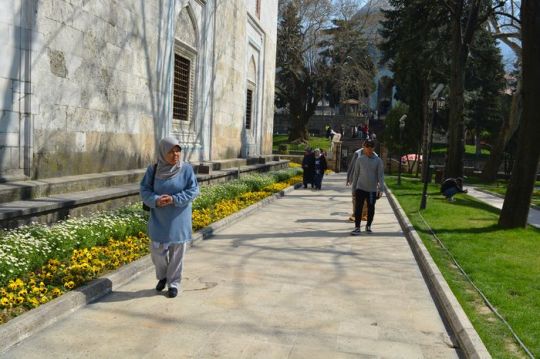
Evolution of Tsarevets Reinforcement and Transformation
The third period marked a significant phase of reconstruction, driven by the evolving cultural and political landscape. Extensive fortification efforts were undertaken, including reinforcement of fortress walls, the creation of complex entry paths, and enhancements in water storage capacity. These endeavors aimed to safeguard the capital against external threats while accommodating the changing needs of its inhabitants.
The Patriarchate Citadel of Spiritual Authority
Situated atop Tsarevets Hill, the Patriarchate stands as an independent architectural ensemble, encompassed by formidable fortress walls with the primary entrance facing west. Spread across 2413 square meters on the highest part of the hill known as Chan Tepe (The Bell Hill), the complex centers around the Patriarchate Church “Vuznesenie Gospodne” (Ascension Day of God), revered as the “mother of all Bulgarian churches” by medieval authors.
The core of the complex comprises the Patriarchate Church, surrounded by an interior courtyard housing bedrooms, working quarters, a library, and possibly a scriptorium. The architectural style of the church follows the Tzarigrad type, characterized by cross-domed cupolas grouped around a bell tower. Notably, the church’s west cliff saw construction in the 14th century, showcasing remarkable architectural evolution.
Urban Dynamics and Community Life
The Palace and the Patriarchate served as the focal points of the capital city, their grandeur balancing the surrounding suburbs and buildings. The layout of streets and buildings suggests a deliberate urban planning strategy, with distinct clusters for artisans Private Tours Istanbul, traders, service industry workers, and local government officers. Surrounding monasteries, discovered through artifacts, played multifaceted roles beyond religious worship, serving as centers for education, reading, writing, and information dissemination within the broader community.
The strategic fortifications and architectural landmarks of Tsarevets reflect the intricate interplay between defensive needs, cultural aspirations, and community dynamics. Through meticulous archaeological research and historical analysis, we unravel the layers of Tsarevets’ rich heritage, shedding light on its transformation from a medieval stronghold to a vibrant center of spiritual and secular power.
0 notes
Photo
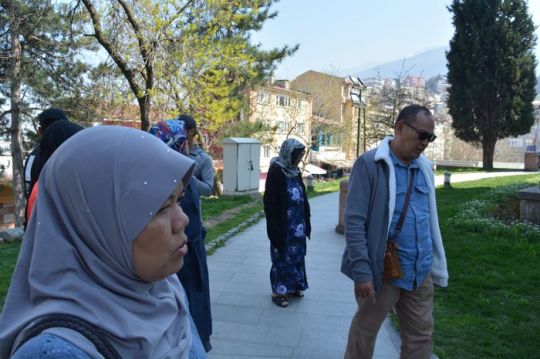
Geography and Natural Resources of Bulgaria
Landscapes and Waterways
Bulgaria is a country with a lot of mountains, plains, and rivers. On one side of the rectangular-shaped Bulgaria, there is a coast along the Black Sea. The varied landscapes and the sea have made the country good for farming, raising animals, and forestry. Important crops include cereals, grapes, potatoes, silkworms, roses, and tobacco.
Geographical Information
Area: 42,785 square miles
Latitude and Longitude: 44°12’50” to 41°14’12” N, 22°21’35” to 23°36’37’’ E
Population (1956 census): 7,613,709
Population (1962 preliminary data): 8,046,000
Population Density (1956): 179 people per square mile
Major Cities
The largest cities in Bulgaria are Sofia City Tour Istanbul, Plovdiv, Varna, Russe, and Burgas, according to the 1956 census.
Population Changes
In 1946, 74% of the population lived in rural areas, and 26% in urban areas. By 1956, this had shifted to 65% in rural areas and 35% in urban areas.
Ethnic Diversity
1984:
Bulgarians (Slavs): 86.8%
Turks: 10.2%
Gypsies: 1.3%
Jews: 0.5%
Others: 1.2%
1952:
Bulgarians (Slavs): 91%
Turks: 6%
Gypsies: 2%
Jews: 0.04%
Others: 0.96%
Languages and Minorities
The main language is Bulgarian (Slavonic). Turkish is spoken by the Turkish minority, and Old Spanish is spoken by the Jewish minority, among other languages. The numbers of the Turkish and Jewish minority groups have decreased under the Communist regime due to emigration.
Religion
The exact percentage of religious followers is not available due to the Communist regime’s stance against religion. Despite discouraging religious practices, the regime uses the church for propaganda. The majority of the population is considered Greek Orthodox, with Islam as the second-largest religion. There are also small percentages of Catholics, Protestants, Jews, and others.
Mining and Natural Resources
Coal (1962): 20,800,000 tons
Iron (1962): 628,000 tons
Copper (1962): 93,000 tons
Lead and Zinc (1956): 1,500,000 tons
Oil (1961): 207,000 tons
Bulgaria has rich mineral resources, including coal, iron, copper, lead, zinc, and oil. Varna, near the Black Sea, and the Pleven district are significant locations for mineral deposits, particularly crude oil discovered in 1962. The country also boasts around 400 mineral springs, with famous ones like the baths of Hisara, Merichleri, and Separevo.
0 notes
Photo

Geography and Natural Resources of Bulgaria
Landscapes and Waterways
Bulgaria is a country with a lot of mountains, plains, and rivers. On one side of the rectangular-shaped Bulgaria, there is a coast along the Black Sea. The varied landscapes and the sea have made the country good for farming, raising animals, and forestry. Important crops include cereals, grapes, potatoes, silkworms, roses, and tobacco.
Geographical Information
Area: 42,785 square miles
Latitude and Longitude: 44°12’50” to 41°14’12” N, 22°21’35” to 23°36’37’’ E
Population (1956 census): 7,613,709
Population (1962 preliminary data): 8,046,000
Population Density (1956): 179 people per square mile
Major Cities
The largest cities in Bulgaria are Sofia City Tour Istanbul, Plovdiv, Varna, Russe, and Burgas, according to the 1956 census.
Population Changes
In 1946, 74% of the population lived in rural areas, and 26% in urban areas. By 1956, this had shifted to 65% in rural areas and 35% in urban areas.
Ethnic Diversity
1984:
Bulgarians (Slavs): 86.8%
Turks: 10.2%
Gypsies: 1.3%
Jews: 0.5%
Others: 1.2%
1952:
Bulgarians (Slavs): 91%
Turks: 6%
Gypsies: 2%
Jews: 0.04%
Others: 0.96%
Languages and Minorities
The main language is Bulgarian (Slavonic). Turkish is spoken by the Turkish minority, and Old Spanish is spoken by the Jewish minority, among other languages. The numbers of the Turkish and Jewish minority groups have decreased under the Communist regime due to emigration.
Religion
The exact percentage of religious followers is not available due to the Communist regime’s stance against religion. Despite discouraging religious practices, the regime uses the church for propaganda. The majority of the population is considered Greek Orthodox, with Islam as the second-largest religion. There are also small percentages of Catholics, Protestants, Jews, and others.
Mining and Natural Resources
Coal (1962): 20,800,000 tons
Iron (1962): 628,000 tons
Copper (1962): 93,000 tons
Lead and Zinc (1956): 1,500,000 tons
Oil (1961): 207,000 tons
Bulgaria has rich mineral resources, including coal, iron, copper, lead, zinc, and oil. Varna, near the Black Sea, and the Pleven district are significant locations for mineral deposits, particularly crude oil discovered in 1962. The country also boasts around 400 mineral springs, with famous ones like the baths of Hisara, Merichleri, and Separevo.
0 notes
Photo
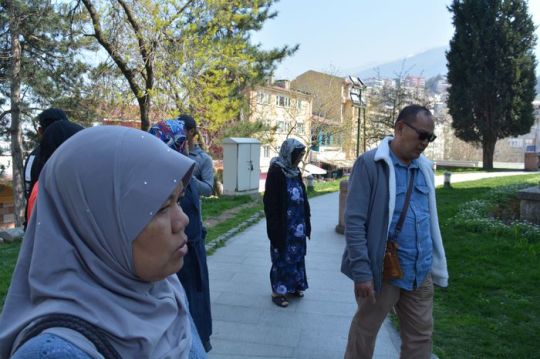
Geography and Natural Resources of Bulgaria
Landscapes and Waterways
Bulgaria is a country with a lot of mountains, plains, and rivers. On one side of the rectangular-shaped Bulgaria, there is a coast along the Black Sea. The varied landscapes and the sea have made the country good for farming, raising animals, and forestry. Important crops include cereals, grapes, potatoes, silkworms, roses, and tobacco.
Geographical Information
Area: 42,785 square miles
Latitude and Longitude: 44°12’50” to 41°14’12” N, 22°21’35” to 23°36’37’’ E
Population (1956 census): 7,613,709
Population (1962 preliminary data): 8,046,000
Population Density (1956): 179 people per square mile
Major Cities
The largest cities in Bulgaria are Sofia City Tour Istanbul, Plovdiv, Varna, Russe, and Burgas, according to the 1956 census.
Population Changes
In 1946, 74% of the population lived in rural areas, and 26% in urban areas. By 1956, this had shifted to 65% in rural areas and 35% in urban areas.
Ethnic Diversity
1984:
Bulgarians (Slavs): 86.8%
Turks: 10.2%
Gypsies: 1.3%
Jews: 0.5%
Others: 1.2%
1952:
Bulgarians (Slavs): 91%
Turks: 6%
Gypsies: 2%
Jews: 0.04%
Others: 0.96%
Languages and Minorities
The main language is Bulgarian (Slavonic). Turkish is spoken by the Turkish minority, and Old Spanish is spoken by the Jewish minority, among other languages. The numbers of the Turkish and Jewish minority groups have decreased under the Communist regime due to emigration.
Religion
The exact percentage of religious followers is not available due to the Communist regime’s stance against religion. Despite discouraging religious practices, the regime uses the church for propaganda. The majority of the population is considered Greek Orthodox, with Islam as the second-largest religion. There are also small percentages of Catholics, Protestants, Jews, and others.
Mining and Natural Resources
Coal (1962): 20,800,000 tons
Iron (1962): 628,000 tons
Copper (1962): 93,000 tons
Lead and Zinc (1956): 1,500,000 tons
Oil (1961): 207,000 tons
Bulgaria has rich mineral resources, including coal, iron, copper, lead, zinc, and oil. Varna, near the Black Sea, and the Pleven district are significant locations for mineral deposits, particularly crude oil discovered in 1962. The country also boasts around 400 mineral springs, with famous ones like the baths of Hisara, Merichleri, and Separevo.
0 notes
Photo

A Precipitated Conflict and Strategic Errors
Prelude to Chaos
In mid-October, after the Allies declared war on Turkey, the Balkans witnessed a tumultuous series of events. Bulgaria, at the forefront of the conflict, achieved significant victories in the Odrin region of Thrace. However, strategic blunders and shifting alliances would soon plunge the region into further chaos.
Bulgarian Campaigns
As three Bulgarian armies secured victories in Thrace, success smiled upon the Serbs and Greeks in Macedonian and Albanian territories. The Ottoman Empire, facing mounting losses, sought a truce. King Ferdinand, acting as Commander-in-Chief, made a strategic error driven by his eagerness to enter Constantinople swiftly. Ordering an attack on the heavily fortified Turkish position at Chataldja, mere kilometers from Constantinople, proved a hasty move that would alter the course of events.
Stalled Offensive and Shifting Tides
Unfortunately, the offensive at Chataldja faced resistance, emboldening the Turkish government. London peace negotiations faltered in December, and Germany threw its support behind the new Turkish regime. The fate of the war hung once again on the battlefield, and in the ensuing months, Bulgarian troops tightened their grip. Prolonged and bloody battles led to a breakthrough, compelling Turkey to sign a peace treaty in London on May 17, 1913.
Disputes over Territory
Despite the victorious outcome, internal strife plagued the Allies. Disagreements over the division of conquered territory emerged. Secret negotiations between Serbia and Greece signaled the virtual termination of the Balkan Alliance. The autumn of 1912 saw diplomatic maneuvers that foreshadowed Bulgaria’s predicament Private Turkey Tours.
Bulgaria’s Assault on Former Allies
In a historical breach of the Constitution, King Ferdinand I launched an offensive on June 16, 1913, against former allies—the Serbian and Greek armies occupying Macedonia. The move, marked by miscalculations, exposed Bulgaria to a coalition that now included Romania and Turkey.
Bulgaria’s Historical Irresponsibility
With battles erupting on four fronts, Bulgaria found itself in a precarious position. The precipitant step proved historically irresponsible, considering the exhaustion of the Bulgarian army post-Balkan War. Adding to the complexity, Russia, a key player, showed little sympathy for Bulgarian claims and harbored favorable sentiments for Serbia.
The Unraveling of Alliances
The Balkan Wars, initially marked by triumphs and territorial gains, descended into discord and internal strife. Bulgaria’s ill-fated offensive, driven by strategic errors and a fractured alliance, painted a tumultuous picture of the region’s complex geopolitical landscape.
0 notes
Photo

A Precipitated Conflict and Strategic Errors
Prelude to Chaos
In mid-October, after the Allies declared war on Turkey, the Balkans witnessed a tumultuous series of events. Bulgaria, at the forefront of the conflict, achieved significant victories in the Odrin region of Thrace. However, strategic blunders and shifting alliances would soon plunge the region into further chaos.
Bulgarian Campaigns
As three Bulgarian armies secured victories in Thrace, success smiled upon the Serbs and Greeks in Macedonian and Albanian territories. The Ottoman Empire, facing mounting losses, sought a truce. King Ferdinand, acting as Commander-in-Chief, made a strategic error driven by his eagerness to enter Constantinople swiftly. Ordering an attack on the heavily fortified Turkish position at Chataldja, mere kilometers from Constantinople, proved a hasty move that would alter the course of events.
Stalled Offensive and Shifting Tides
Unfortunately, the offensive at Chataldja faced resistance, emboldening the Turkish government. London peace negotiations faltered in December, and Germany threw its support behind the new Turkish regime. The fate of the war hung once again on the battlefield, and in the ensuing months, Bulgarian troops tightened their grip. Prolonged and bloody battles led to a breakthrough, compelling Turkey to sign a peace treaty in London on May 17, 1913.
Disputes over Territory
Despite the victorious outcome, internal strife plagued the Allies. Disagreements over the division of conquered territory emerged. Secret negotiations between Serbia and Greece signaled the virtual termination of the Balkan Alliance. The autumn of 1912 saw diplomatic maneuvers that foreshadowed Bulgaria’s predicament Private Turkey Tours.
Bulgaria’s Assault on Former Allies
In a historical breach of the Constitution, King Ferdinand I launched an offensive on June 16, 1913, against former allies—the Serbian and Greek armies occupying Macedonia. The move, marked by miscalculations, exposed Bulgaria to a coalition that now included Romania and Turkey.
Bulgaria’s Historical Irresponsibility
With battles erupting on four fronts, Bulgaria found itself in a precarious position. The precipitant step proved historically irresponsible, considering the exhaustion of the Bulgarian army post-Balkan War. Adding to the complexity, Russia, a key player, showed little sympathy for Bulgarian claims and harbored favorable sentiments for Serbia.
The Unraveling of Alliances
The Balkan Wars, initially marked by triumphs and territorial gains, descended into discord and internal strife. Bulgaria’s ill-fated offensive, driven by strategic errors and a fractured alliance, painted a tumultuous picture of the region’s complex geopolitical landscape.
0 notes
Photo
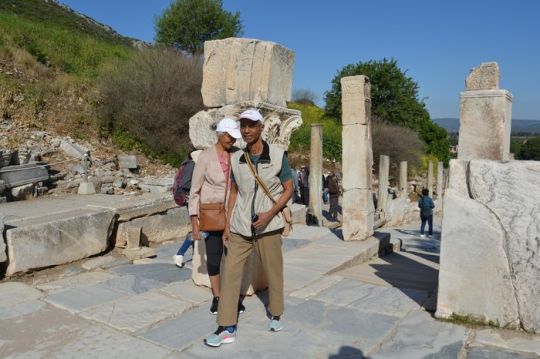
The Veil of Calmness
Unveiling the Struggle of Storytellers
Concealed Emotions The Facade of Composure
In the hallowed halls of diplomacy, where decorum and dignity reign supreme, an unexpected tableau unfolds. Storytellers, burdened with tales that pierce the soul, stand before a Secretary of Legation. The veneer of calmness shrouds their trembling hearts, revealing a struggle to navigate the weight of their narratives. It’s a delicate dance between maintaining proper decorum and confronting the storm of emotions brewing within.
Dignity Amidst Tremors The Struggle for Composure
The storytellers, acutely aware of the significance of addressing a Secretary of Legation, embark on a journey to uphold a semblance of composure. Their voices, initially subdued, betray the effort to contain the emotional tempest within. A profound sense of dignity pervades their demeanor, underscoring the gravity of the narratives they carry. However, a mere glimpse beneath the surface lays bare the strain — a paleness in the face, a nervous dance of features, and a tremor in the voice, all precursors to the turmoil beneath.
The Unmasking Quivering Voices and Tears Unleashed
As the stories unfold, the meticulously constructed facade begins to crack. The storytellers, grappling with the intensity of their narratives, find themselves teetering on the precipice of vulnerability. In a poignant display of humanity, the calmness once meticulously maintained crumbles. A sudden cessation mid-story marks the breaking point. The hands bury faces, tears stream unabated, and a symphony of sobs fills the room. The struggle against the torrent of emotions becomes futile, revealing the depth of their anguish and the unspoken scars carried within Balkan Tours.
A Symphony of Sorrow The Contagion of Tears
The sobs and tears, raw and unfiltered, weave a tapestry of shared sorrow. The storytellers, unable to endure the weight of their narratives, find solace in vulnerability. The contagious nature of their emotional release fosters an atmosphere where unspoken pain is acknowledged, and the humanity that binds us all transcends diplomatic formalities.
In the quiet corridors of diplomacy, where tales of human suffering intersect with the obligations of statesmanship, the struggle to articulate harrowing stories remains a poignant testament to the indomitable human spirit. The veil of calmness, meticulously worn, becomes a fragile shield against the deluge of emotions, ultimately unraveling in the face of shared narratives and the universal language of tears.
0 notes
Photo

The Veil of Calmness
Unveiling the Struggle of Storytellers
Concealed Emotions The Facade of Composure
In the hallowed halls of diplomacy, where decorum and dignity reign supreme, an unexpected tableau unfolds. Storytellers, burdened with tales that pierce the soul, stand before a Secretary of Legation. The veneer of calmness shrouds their trembling hearts, revealing a struggle to navigate the weight of their narratives. It’s a delicate dance between maintaining proper decorum and confronting the storm of emotions brewing within.
Dignity Amidst Tremors The Struggle for Composure
The storytellers, acutely aware of the significance of addressing a Secretary of Legation, embark on a journey to uphold a semblance of composure. Their voices, initially subdued, betray the effort to contain the emotional tempest within. A profound sense of dignity pervades their demeanor, underscoring the gravity of the narratives they carry. However, a mere glimpse beneath the surface lays bare the strain — a paleness in the face, a nervous dance of features, and a tremor in the voice, all precursors to the turmoil beneath.
The Unmasking Quivering Voices and Tears Unleashed
As the stories unfold, the meticulously constructed facade begins to crack. The storytellers, grappling with the intensity of their narratives, find themselves teetering on the precipice of vulnerability. In a poignant display of humanity, the calmness once meticulously maintained crumbles. A sudden cessation mid-story marks the breaking point. The hands bury faces, tears stream unabated, and a symphony of sobs fills the room. The struggle against the torrent of emotions becomes futile, revealing the depth of their anguish and the unspoken scars carried within Balkan Tours.
A Symphony of Sorrow The Contagion of Tears
The sobs and tears, raw and unfiltered, weave a tapestry of shared sorrow. The storytellers, unable to endure the weight of their narratives, find solace in vulnerability. The contagious nature of their emotional release fosters an atmosphere where unspoken pain is acknowledged, and the humanity that binds us all transcends diplomatic formalities.
In the quiet corridors of diplomacy, where tales of human suffering intersect with the obligations of statesmanship, the struggle to articulate harrowing stories remains a poignant testament to the indomitable human spirit. The veil of calmness, meticulously worn, becomes a fragile shield against the deluge of emotions, ultimately unraveling in the face of shared narratives and the universal language of tears.
0 notes
Photo
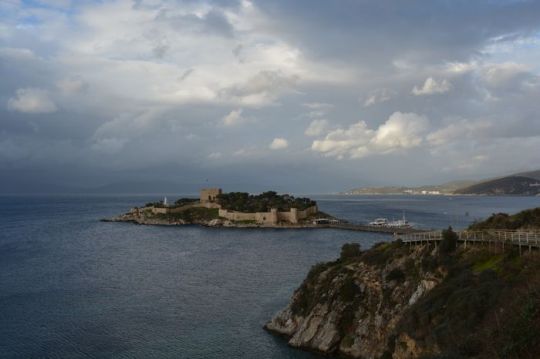
Betrayal and Bombardment
Aziz Pacha’s Controversial Actions in Perustitza
In the annals of Perustitza’s tragic history, a betrayal unfolded at the hands of Aziz Pacha, a figure once thought to be a friend to the Bulgarians. His subsequent removal from his position attested to a stark change in allegiances. The events that transpired paint a grim picture of a leader who, despite repeated pleas for protection, turned against the very people he was duty-bound to safeguard.
Aziz Pacha’s fall from grace was swift and decisive. Once hailed for his supposed friendship with the Bulgarians, he now stands accused of gross negligence and, more shockingly, leading an offensive against the very villagers he was meant to protect. The tale takes a dark turn on a fateful Thursday afternoon when Aziz Pacha, accompanied by regular troops and a battery of artillery, descended upon Perustitza.
The villagers, already on edge from the relentless attacks by the marauding Bashi-Bazouks, had sought refuge in the hope that Aziz Pacha would come to their aid. However, instead of extending a protective hand, he chose to unleash a bombardment without even offering a summons for surrender. The sudden roar of cannons became the ominous herald of a betrayal that would echo through the village.
Aziz Pacha
The official Turkish narrative suggests that Aziz Pacha had sent a summons to the villagers, urging them to surrender before resorting to force. However, the people of Perustitza vehemently deny this claim, pointing to the repeated demands they had sent to Aziz Pacha for protection. The very fact that the village had reached out to him three times implies a desperate plea for assistance, not a stubborn refusal to surrender private tours bulgaria.
Mr. Guarracino, an individual involved in investigating the events, tirelessly sought evidence to support the Turkish assertions. However, the villagers’ steadfast denial, coupled with the Turks’ admission that Perustitza had indeed requested protection, casts doubt on the narrative that a summons was issued. The weight of evidence, or lack thereof, points to a more sinister reality: Aziz Pacha’s actions were not driven by a desire for surrender but by a calculated decision to turn against those he was meant to defend.
The betrayal of Aziz Pacha raises troubling questions about the dynamics at play within the political landscape of the time. Was this a personal betrayal, a shift in loyalties, or a manifestation of larger geopolitical forces at work? Regardless of the motives, the consequences for the people of Perustitza were devastating.
As the cannons rained destruction upon the village, the once-hopeful cries for protection turned into anguished pleas for mercy. The very leader who should have been a beacon of safety became the harbinger of doom. The events in Perustitza serve as a stark reminder of the complex interplay between power, betrayal, and the devastating impact it can have on the lives of the innocent.
Aziz Pacha’s actions linger as a dark stain on the pages of Perustitza’s history, a cautionary tale of misplaced trust and the consequences of leaders who betray the very people they are sworn to protect. The villagers’ resilience in the face of this betrayal speaks to the enduring spirit of those who, even in the darkest hours, hold onto the hope of justice and redemption.
0 notes